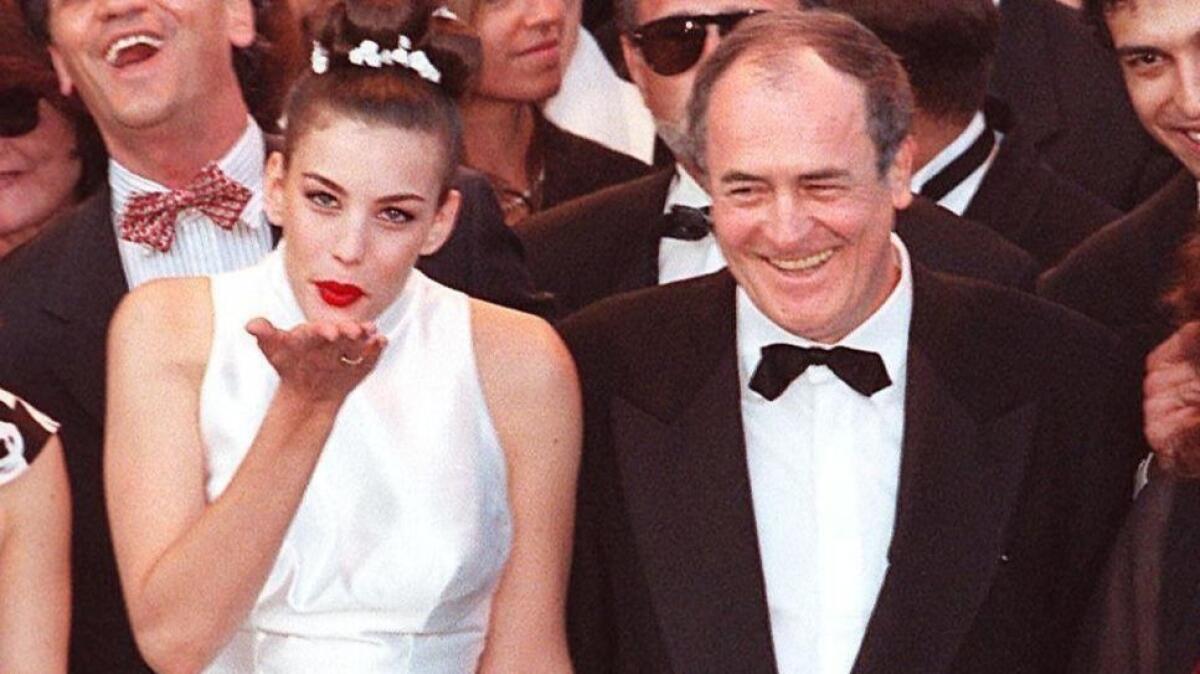For Bernardo Bertolucci, the hype over ‘Last Tango In Paris’ both defined and sidetracked his career

For Bernardo Bertolucci, there was before “Last Tango in Paris” and after “Last Tango in Paris.”
Before “Last Tango,” Bertolucci, who died in Rome on Monday at age 77, was an admired director of Italian art films whose collaboration with wizardly cinematographer Vittorio Storaro on 1970’s hypnotic, visually sensual “The Conformist” made him a cinematic stylist to conjure with.
Two years later came “Last Tango in Paris,” which as an English-language film with major studio distribution and a star of the caliber of Marlon Brando considerably increased Bertolucci’s visibility even before the film screened. And then all hell broke loose.
The sexually explicit “Last Tango” starred Brando as an American widower who engages in a torrid, anonymous affair with a young Parisian played by 19-year-old newcomer Maria Schneider.
That physical relationship included a scene that became so infamous that if you Google “Last Tango in Paris” even today, the first related item of potential interest, ahead even of “YouTube,” “trailer” and “full movie,” is “butter.”
That sequence and others like it earned the film an X rating, the covers of both Time and Newsweek and a hyperbolic rave by Pauline Kael in the New Yorker that created an across-the-board frenzy to see it that I vividly remember to this day.
Kael’s piece, which Roger Ebert called “the most famous film review ever published,” did not stint on praise. She called it “the most powerfully erotic movie ever made” as well as a film that has “altered the face of an art form.” “Last Tango” was, she insisted, “a movie people will be arguing about as long as there are movies.”
Not quite.
For though “Last Tango” was successful at the box office and earned two Oscar nominations, one for Brando’s performance and one for Bertolucci’s direction, everything about the film went downhill after that initial hubbub.
Not only did the picture’s release not alter the face of anything, it marked a kind of high water mark for bringing a European art house sensibility to studio movies as well as for the ability of a single critic to powerfully affect a film’s national reception.
And as far as being a source of endless conversation, “Last Tango” is not often spoken about except in the context of the anger both actors felt at how what appeared on-screen was achieved.
From the Archives: Bernardo Bertolucci: The emperor’s new clothier »
Brando, as revealed in the fine documentary “Listen To Me Marlon,” felt manipulated into revealing parts of his personal life on film and did not speak to Bertolucci for years.
Even worse, Schneider claimed that the infamous butter scene was not in the script, that Brando and Bertolucci manipulated her into doing it and that the whole experience, though simulated, left her as humiliated and traumatized as if she had been raped.
(The director counterclaimed the scene was in the script but admitted that the butter element had been improvised and sprung on Schneider at the last minute.)
But even before all of that rancor became public, the “Last Tango” acclaim had changed the direction of Bertolucci’s career.
The golden ticket effect of “Last Tango’s” notoriety enabled the director to find financing for an enormous historical epic on the class struggle in Italy, 1976’s “1900,” which starred Robert DeNiro, Gerard Depardieu and Dominique Sanda with cameos by Sterling Hayden and Burt Lancaster.
As someone who sat through the five-hour-and-17-minute original version at Cannes, my memory is of seeing more peasants waving more red flags than I’d ever witnessed in my life. (The American theatrical release ended up being just over four hours.)
The fuss over both of these films perhaps took something out of Bertolucci, understandably modulating the desire to be pushing the envelope.
The filmmaker did have a great success with 1987’s gorgeous “The Last Emperor,” a grand historical epic ravishingly photographed by Storaro, which was the first film to be shot in Beijing’s Forbidden City. It was nominated for nine Oscars and won every one, including best picture and director and a cinematography nod for Storaro.
Bertolucci worked regularly after that, turning out a series of small-scale stories including “Stealing Beauty” (1996) and “The Dreamers” (2003). Even when the setting seemed dramatic, as it was in 1990’s “The Sheltering Sky,” the feeling was intimate.
Almost like the last emperor himself, who appeared to find contentment as a gardener after the cacophony of ruling China and all that that entailed, Bernardo Bertolucci seemed not only to have come home but to have fully embraced being there.
More to Read
Only good movies
Get the Indie Focus newsletter, Mark Olsen's weekly guide to the world of cinema.
You may occasionally receive promotional content from the Los Angeles Times.








